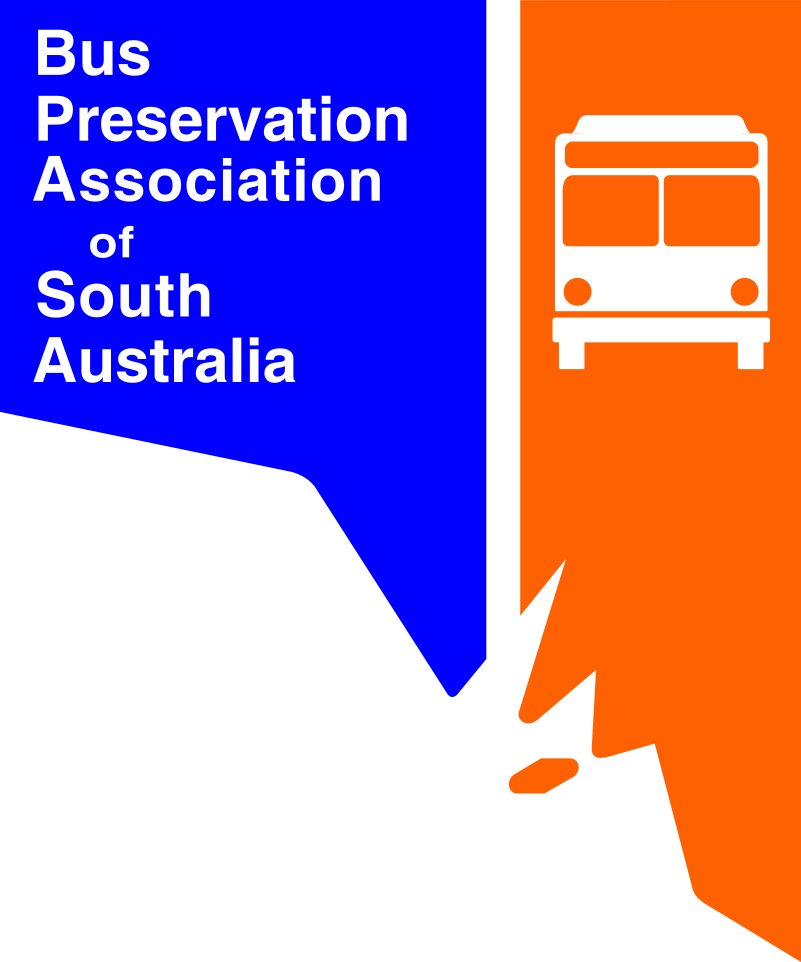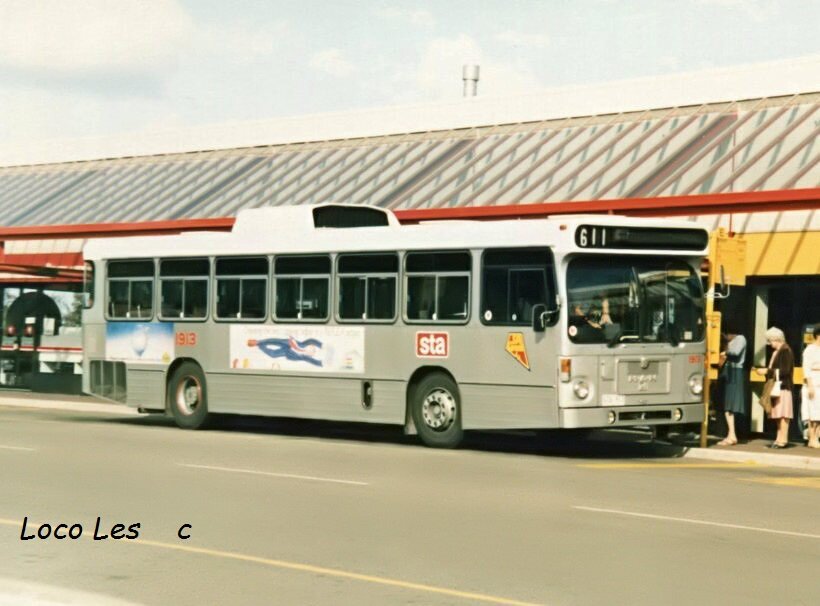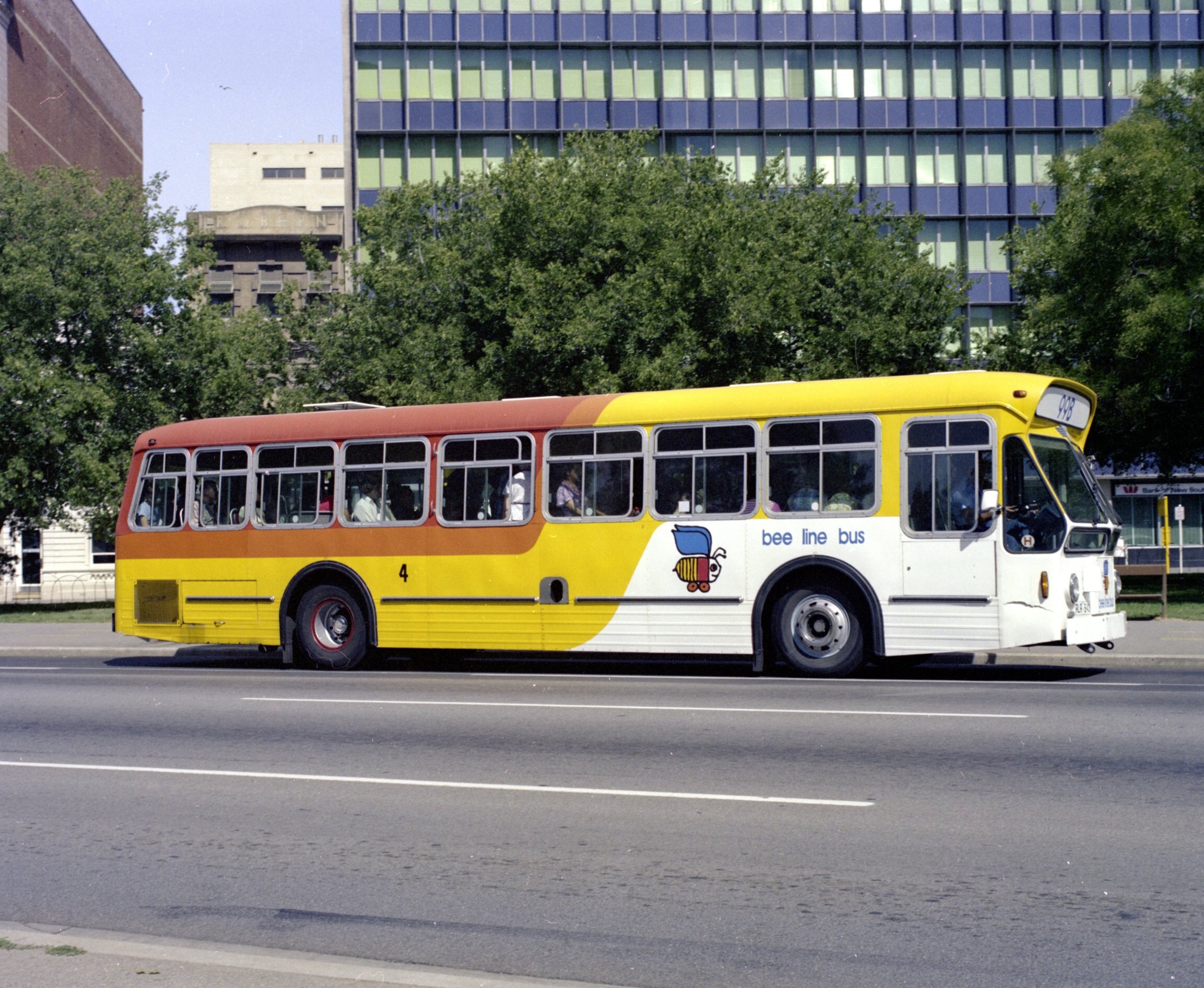State Transport Authority Liveries
Les J Horsburgh Photo
Silver
Silver was the longest used livery in Adelaide. Beginning in 1952 when the Municipal Tramways Trust began using silver with a red stripe, and their logo in red. This was originally for trams, but as the MTT began to operate more buses (and fewer trams), more buses received silver.
Many different types of bus received this livery, as all privately operated buses which were acquired by the government in 1974 were repainted. The last buses to receive this livery were the MAN SL200s, which entered service in 1983. This is 31 years after its first introduction.
The ones which were repainted from private operators, and the subsequent deliveries of silver buses, all had their roofs painted white, going down to just above the windscreen.
Currently, BPASA member-owned buses 1001, 1897, 1900 and 1917 are in this livery.
Bee Line
The “Bee Line”, route 99B free bus began in 1973 with the intention of connecting the highly popular Glenelg Tram at Victoria Square with Adelaide Railway Station via King William Street and North Terrace.
The Livery was applied originally to Leyland Worldmaster buses the MTT had either acquired from private operators, or had been recently retired. This livery was later applied to AEC Swifts that had been retired from standard route service, to replace the ageing Worldmasters. The last of the Swifts to be retired from the 99B were in the mid 80s, where the service saw silver MAN SL200s regularly operate the service, among others.
The service ran in its original routing until 2007, when the Glenelg Tramline was extended beyond Victoria Square, via North Terrace to the City West UniSA campus, effectively duplicating the 99B.
No current BPASA member-owned buses are in this livery.
City Loop
The “City Loop” route 99C free bus was introduced in 1980 to work alongside the Bee Line to transport passengers around the CBD, servicing the Railway Station, Royal Adelaide Hospital, Hindmarsh Square, Victoria Square, Central Bus Station and Light Square. The service was modified somewhat in 1984, before being removed entirely in 1985. In later years it would see a reincarnation.
It too saw its introduction with ex MTT Leyland Worldmaster buses, later being replaced with AEC Swifts, and finally seeing standard STA buses operating it.
No current BPASA member-owned buses are in this livery.
Les J Horsburgh Photo
Circle Line
The “Circle Line” (route 100) bus was introduced in 1977 to link the outer suburbs major interchanges and roads with a service that circled the CBD at a considerable distance.
The service was operated at first by a fleet of “100 series” AEC Regal Mk IVs painted into a special Circle Line livery.
These were later replaced with new Volvo B59s, again painted in the same livery. In later years they were repainted silver and the service was open to be run by any STA bus.
No current BPASA member-owned buses are in this livery.
B58 #1466 on Eagle on the Hill
Brown Bomber
The “Brown Bomber” livery was introduced with the Volvo B58 and B10M buses, which entered service from 1980. This livery was largely based on a Mercedes demonstrator bus from Europe. This livery made buses to the outer northern, outer southern, and hills buses stand out from the inner city silver buses of the time, with the Volvo buses painted in this livery only operating in those regions.
Demonstrator buses #1391 and #7000 later both wore this livery aswell.
Currently, BPASA member-owned bus 1466 is in this livery.
SG280H #1970 at West Lakes. PMC Photo
Bicentennial
The bicentennial livery consists of green and gold stripes (commonwealth colours) running at a 57 degree angle on the sides, and straight on the front.
This livery appeared on all 40 MAN SG280H buses introduced in 1987/1988, as they were funded by the commonwealth as part of the Australian Bicentenary.
Currently, BPASA member-owned bus 1954 is in this livery.
Volvo B10M #1445 at Chandlers Hill
Speedstripes
In 1987, a new livery was brought in to replace the ageing all-silver. This was also to show the State Transport Authority as a single, unified body, across all metropolitan buses, trams, and trains. It consisted of an orange and blue stripe, running at 57 degrees on the sides of the bus. These stripes also featured on the front at 90 degrees.
Almost all types of buses with the STA (and later TransAdelaide) were painted into this livery, including Volvo B58 and B10Ms, MAN SL200s, MAN SL202s, MAN SG280Hs, and MAN 11.190s. 3000- class trains received a modified version of this livery, and a single Volvo B59, 1292, was painted into this livery too.
Currently, BPASA member-owned buses 1344, 1345, 1347, 1439, 1445, 1454, and 1812 are painted in this livery.
O305 #1540 on Lyons Road
SG280H #1970 in the CBD. S Mitchell Photo
Busway
In 1986, stage 1 of the O-Bahn Busway opened to Paradise Interchange. Mercedes O305 and O305G buses were purchased to operate “busway” routes, and painted in a livery to make them distinctive from the rest of the fleet. (The first Mercedes rigid was introduced in 1982, with the first articulated in 1984). This livery consists of green and blue stripes, running at a 45 degree angle on the sides, and a 90 degree angle at the front and back.
Some MAN SG280H buses were also painted into this livery but at the “regular” speedstripe angle of 57 degrees, and did not feature stripes on the back.
The blue represents the River Torrens, and the green the Linear Park, both of which follow the alignment of the Busway.
Currently, BPASA member-owned buses 1540 and 1594 are painted in this livery.
Above: Original Busway stripes seen on the Mercedes buses
Below: Later “regular” speedstripes in Busway colours, seen on MAN articulateds
Les J Horsburgh Photo
Green Machine
Green Machine is a variation of the speedstripes livery that was used on the CNG and LPG MAN SL200s. Mainly a marketing strategy to show off that they are “green” (hence the name). Similar strategies are still used today, but on electric and hydrogen buses rather than CNG (after Euro V diesel emissions standards were introduced, the benefit of CNG fuelled buses was lost; hence, they have become basically obsolete).
Green Machine livery has 2 green stripes, one light green and one dark, at a 57 degree angle on the sides, and 90 at the front. It was used on MAN SL200s numbered between 1931 and 1940, from 1989 until they were painted into Admet livery c.2000.
No current BPASA member-owned buses are in this livery.

















